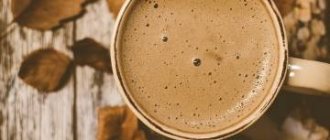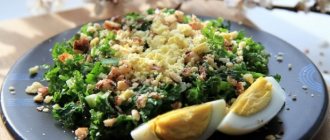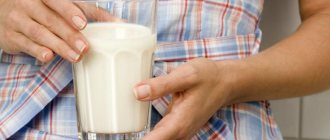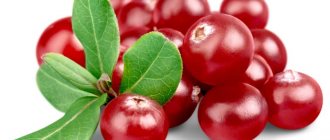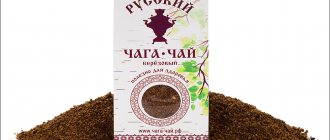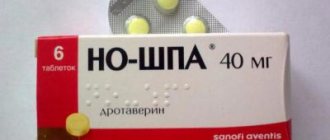Many diseases of the stomach and esophagus are today treated with surgery. And the operation cannot be performed without a correct examination. To study the condition of the esophagus and stomach, gastroendoscopy is used, in which the stomach is examined from the inside. The operation is called FGS - fibrogastroscopy. Sometimes an additional examination of the duodenum is carried out, and this option is called FGDS. Both operations are similar, and therefore the diet before FGS of the stomach and before FGDS will be the same.
Why do you need to prepare?
This is a routine operation, but “swallowing a light bulb,” as patients say, is not very pleasant. Therefore, in order for the information content of the procedure to be at its best, and not to have to carry out the procedure again, it is necessary to prepare properly.
Preparation will eliminate irritation of the mucous membrane and reduce the load on the digestive tract, and will also reduce the gag reflex and pain effects. If you ignore the recommendations, you may experience problems with swallowing and difficulty eating after the procedure.
For inspection, a gastroscope with a flashlight and camera is used. This method is the best for treating polyps and ulcers.
The procedure cannot be performed for heart disease, inflammation or enlargement of the lymph nodes in the neck, stomach ulcers and some other pathologies.
Preparation for gastroscopy of the stomach
The first and main nuance in preparing for gastroscopy is the psychological attitude. Due to the widespread belief about pain and discomfort during the procedure, a person begins to fear it. There will be discomfort, but we are not talking about pain. Modern equipment provides tolerable sensations during gastroscopy. In some cases, a person may be prescribed sedatives. Preparation for gastroenteroscopy is carried out both at home and during hospital treatment. In the latter case, it includes the following steps:
- Consultation with a doctor. The specialist clarifies such nuances as the presence of allergies, heart pathologies, pregnancy, past surgical interventions, as well as information about blood clotting.
- Signing of documents. After discussing gastroscopy, the patient must sign a consent to the procedure.
- Direct preparation for FGDS examination. It consists of limiting food and fluid intake 8 hours before the start. What you can and cannot eat is described below.
Preparation for gastroscopy can be done at home if the person is not in hospital. It is divided into 2 stages, the first begins in another 2-3 days and requires:
- limiting spicy and fatty foods, especially if you suspect a stomach ulcer;
- taking anti-inflammatory herbal teas, such as chamomile;
- restriction of active sports;
- monitoring the condition of the stomach and intestines, i.e. for the possible occurrence of acute pain;
- refusal to take non-steroidal anti-inflammatory drugs.
How to prepare for FGDS? The following rules must be followed on the day of the procedure:
- do not smoke 3 hours before the procedure;
- tell your doctor about a possible pregnancy;
- empty your bladder before the test;
- remove jewelry, glasses or contacts, dentures;
- take a personal towel, which will be needed if you drool during the procedure;
- do not try to speak or swallow saliva during diagnosis.
- Salad with smoked sausage: recipes
- Methods for determining pregnancy without a test
- Beef tongue - how to cook it correctly. Recipes for the most delicious dishes with photos and videos
Authorized Products
What foods does the diet allow before FGS, what can you eat? It is recommended to consume preferably low-fat dairy products, such as low-fat cheeses or cottage cheese. We cook the chicken without the skin, choose the cheese without hot spices. We prepare soups with mild chicken or fish broth. We focus on boiled or scrambled eggs, and supplement the diet with fish such as hake or pollock. Fish, like meat dishes, is recommended not to be fried, but boiled. It is necessary to consume enough fiber, add it in the form of boiled or steamed vegetables or fruits. The most profitable vegetables are carrots and beets.
Fruits are essential as sources of vitamins and fiber. Of these, apples and bananas are the best. It is recommended to grate apples. We also eat grated pumpkin. Fruits can be boiled for compote if desired.
An important point is that you need to drink enough. In addition to plain water, tea with milk, compotes, juices and fruit drinks, still mineral water and vegetable and fruit decoctions are recommended for consumption.
How many hours before an FGD can you eat?
The diet before FGD the day before the operation prescribes that the diet should be even lighter. 20 hours before the operation itself, it is advisable not to eat at all, and the last snack should be as light as possible. Ideally, it will be vegetables or poultry, and you cannot eat more than 300 grams. Such food will be completely digested before gastroscopy.
The rules must be followed, because if the required regime is violated, food particles may remain in the stomach, which will interfere with vision. The diet before gastroscopy of the stomach in the first half of the day does not allow you to eat anything. Also, the presence of food provokes vomiting during the examination, and this will complicate the specialist’s work. Vomiting will not only interfere with the operation, but can also damage the walls of the esophagus if the endoscope is already in place. The endoscope will also be much more difficult to insert or remove if the stomach and esophagus are contracting.
Also, the doctor may simply refuse to perform the operation if you were unable to follow the specified rules.
You should also drink a little before surgery. Two hours before gastroscopy, you can drink up to 250 ml, and this can only be water. Juice or cocoa, like any other drinks, can also cause vomiting, and therefore it is not recommended to drink them before surgery. If you do eat before surgery, take enzymes to help speed up digestion. Such drugs are Panzinorm or Creon.
The amount of time that must pass between eating and surgery may vary depending on the patient. If your stomach can handle food quickly, you are allowed to eat 12 hours before your doctor's appointment. Since gastroscopy is done in the morning, you can have dinner, but you are no longer allowed to have breakfast. It is better to have dinner early, because at night the stomach processes food more slowly.
If the procedure requires anesthesia, the diet before gastroscopy requires you to fast for 12 hours before the operation. Doctors perform anesthesia if a long examination is necessary or if there is a likelihood of difficulties.
General recommendations
Before fibroesophagogastroduodenoscopy, doctors do not advise smoking. Under the influence of nicotine, gastric juice is produced, and this contradicts the proper preparation of the gastrointestinal tract for the study. You should not take medications in the morning on an empty stomach. Exceptions are medications that are vitally necessary as prescribed by a doctor for chronic pathologies. You must notify your doctor about the use of medications before the examination.
In the presence of colds and viral diseases, FGDS should be postponed until complete recovery. A runny nose or throat infection is an obstacle to the procedure because it makes breathing difficult. After FGDS, patients often complain of discomfort in the esophagus and throat. In addition, after treatment with an anesthetic, an inhibited swallowing reflex and decreased sensitivity of the tongue are observed. It is unacceptable to expose the stomach to the aggressive effects of alcohol for a week
However, due to the fact that the person who underwent the examination is simply hungry, he is concerned with the question: after how many hours can he eat? You can eat no earlier than an hour later. In this case, food should be liquid, light and not very plentiful. For example, yogurt, soft cottage cheese, liquid oatmeal or semolina. You should not fast for more than three hours; the gastrointestinal tract must be returned to normal functioning.
Provided that the preparation was carried out in compliance with all the rules, FGDS will not cause pain. Gagging, nausea, loud noises and increased salivation are normal. You should not be afraid of looking unsightly. An examination performed by a qualified medical professional is always safe. The information that the gastroenterologist receives makes it possible to make the most accurate diagnosis and determine the only correct course of therapy.
In exceptional cases
If you think that your stomach can handle food quickly, then you are allowed to leave only 9 hours between the operation and your last meal.
In rare cases, the doctor decides that the procedure is best done in the evening. In this case, the diet before the FGD allows you to eat a light breakfast, because the stomach works faster during the day. There cannot be less than nine hours between breakfast and the time of surgery.
Some people feel fear or anxiety before any surgery and are advised to take a sedative half an hour before the procedure. Other recommendations include avoiding smoking, because tobacco smoke increases the secretion of mucus and can additionally provoke the urge to vomit.
Perfumes can also trigger the vomiting reflex, so you will have to abstain from them too. There are no other requirements.
Let us now consider separately what the diet looks like during gastroscopy of the stomach, what you can and cannot eat before the procedure.
Proper diet
The evening before gastroscopy, you need to eat only approved foods. Eating prohibited foods can create a lot of problems for both the patient and the examiner.
What can you eat?
List of foods that are allowed to be eaten before endoscopic examination:
- low-fat broth;
- kefir;
- mashed cottage cheese;
- milk;
- boiled chicken fillet;
- low-fat fish;
- oatmeal and buckwheat porridge;
- omelette;
- vegetables;
- fruits.
What can't you eat?
During preparation for gastroscopy, it is necessary to give up fast food and exclude from the diet:
- fat;
- spicy;
- salty;
- flour.
List of foods that should not be consumed before the examination:
- alcohol;
- nuts;
- seeds;
- chocolate;
- carbonated drinks.
How many hours before can you eat?
You should not eat food later than 8 hours before the examination because:
- food residues will make it difficult for the device to pass through the gastrointestinal tract;
- undigested food can cause vomiting when examined with a tube;
- the presence of food will complicate the detection of pathology of the mucous membrane of the gastrointestinal tract.
Can I drink the water?
Drinking water is allowed 2-4 hours before the procedure. It is permissible to take medications that should not be skipped with a minimum amount of water - 1-2 sips.
The Gastro Video channel tells how to prepare the body for gastroscopy.
What can you eat before FGS?
When a diet is followed before gastric gastroscopy, the menu may include:
- All kinds of soups cooked in broth from chicken, vegetables or fish. Do not add oil or hot seasonings to soups. You cannot prepare soups with pre-fried ingredients.
- White fish, low in fat. Examples are pollock, hake, cod. We boil or steam the fish.
- Chicken, rabbit and turkey. The bird can only be eaten without the skin. It is allowed to eat any types of meat that do not contain fat. All meat is boiled or steamed; it cannot be fried. Cook meat without hot spices and salt, and do not add fat during cooking.
- Buckwheat, boiled rice and wheat. Porridge can only be cooked with water.
- Boiled chicken eggs or omelettes.
- White flour bread, dry bread and crackers.
- Low-fat milk products such as low-fat kefir, cottage cheese and low-fat cheese. Butter in small quantities is allowed.
- Steamed vegetables and many fruits. The best vegetables are potatoes, beets and carrots. It is better to take non-acidic fruits, such as bananas, apples and pears. They should be grated to reduce the load on the intestines.
- Beverages. The most beneficial before this procedure will be fruit compotes with low sugar content. You can also drink tea with milk, also without sugar, and still mineral water. Rosehip decoctions and fruit drinks are recommended. The main thing is the absence of acid, sugar and gas.
What should you remove from your diet?
The diet before gastric gastroscopy prohibits the following types of food:
- Any dishes made from strong or fatty meat broths. Mushroom soups should also not be eaten.
- Fatty meats, semi-finished products, smoked delicacies, goose and duck meat, fast food, all types of fats, except butter and canned food.
- Hot spices, mushrooms, salted and pickled foods and fatty sauces, especially mayonnaise.
- Raw fruits or vegetables with high acidity, as well as legumes, which include peas.
- Cereal and brown bread, all types of baked goods and other flour products such as pasta and pancakes.
- Fermented milk products with a fat content above 3% such as sour cream and cream.
- Solid foods such as nuts and seeds, as well as highly acidic juices, dried fruit and all sweets such as jam and cakes.
- Soda, alcohol, strong tea and cocoa should be removed from drinks.
- The diet for gastric gastritis does not allow drinking sweet drinks.
General description of the examination
FGDS of the stomach or gastroscopy is a type of endoscopic examination of the digestive system. The use of an endoscope allows the attending physician to visually assess the condition of the mucous membrane of the organs, as well as carry out a number of auxiliary manipulations (taking a biopsy, etc.).
Gastroscopy is the “gold” standard for identifying various gastric diseases, prescribed to all patients with characteristic symptoms.
Carrying out FGS necessarily requires special preparation of the patient, which consists of following nutritional recommendations, as well as giving up alcohol and smoking, which are possible aggressive factors for the inner layer of the gastrointestinal tract.
FGDS of the stomach is an important diagnostic method that allows us to identify many serious diseases at the very first stages of their development. Such diseases include peptic ulcers of the stomach and duodenum, malignant neoplasms and autoimmune lesions.

